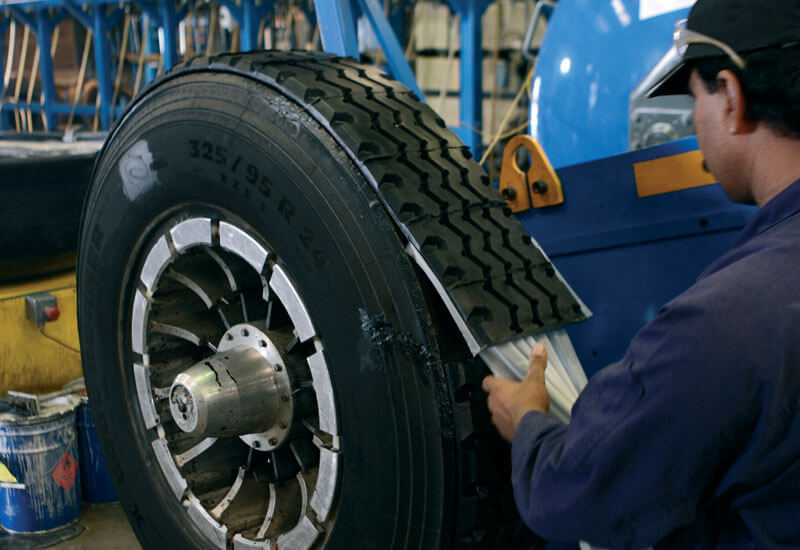By John Goreham G+ Jun 29 2020 - 11:03am
Many vehicle owners feel frustrated when they have a nail in the tire and are told by a tire shop that the tire cannot be repaired. Here are a few common reasons why it can’t be fixed.
Advertisement
You just either rolled up to a tire shop on a flat, were towed in, or drove in with your spare on the car and the flat in the trunk. You have important things to do today, and since you can clearly see there is a nail in the tread, you expect to be told that the nail can be pulled out and the tire fixed quickly. However, after a quick glance, the tire shop says, “No can do, Bubba.” They are not just trying to sell you a new tire. There are real reasons why many flats cannot simply be patched.
Reason 1 Why Your Tire Cannot Be Repaired – You Drove On The Flat
Modern tires have an inner structure of the sidewall that is not designed to support your vehicle when uninflated. You can usually get away with a flat tire rolling without air for a short distance – think yards, not miles. However, if you just drove 10 minutes on the flat, you destroyed that important sidewall structure and the tire cannot be repaired.
Related Story: Tire Shortages and Delays: Not Just For Tesla Owners Anymore
Reason 2 Why Your Tire Cannot Be Repaired – Your Puncture Is In The No Repair Zone
Modern tires also need to be puncture-free along the sides and in from the sides about 20% on both sides of the tire. If your puncture is near the sidewall you are out of luck. Tire shops need to keep customers safe, and they follow the standard industry guidelines and will not repair a puncture too close to either sidewall. They should err on the side of caution to protect your safety and protect themselves from liabiility. Most do.
Reason 3 Why Your Tire Cannot Be Repaired – Your Tire Has Other Issues
If you have a bubble, a tear, or a big honking carbuncle on the side of your tire, it is unrepairable. Even if that is NOT why your tire went flat. If you have any area of the tire worn beyond the tread wear indicators, your tire is not repairable. If your tire is older than the internet, your tire is not repairable. If your tire is unevenly worn and any of the metal parts inside are visible your tire is not repairable. We can keep going. Basically, if your tire was not safe before the puncture, your tire shop would be crazy to try to repair the puncture. According to NHTSA, hundreds of people are killed each year due to tire failure. Your tire shop does not want you to be killed due to tire failure with the receipt for the repair sitting in the cupholder.
Even if that is NOT why your tire went flat. If you have any area of the tire worn beyond the tread wear indicators, your tire is not repairable. If your tire is older than the internet, your tire is not repairable. If your tire is unevenly worn and any of the metal parts inside are visible your tire is not repairable. We can keep going. Basically, if your tire was not safe before the puncture, your tire shop would be crazy to try to repair the puncture. According to NHTSA, hundreds of people are killed each year due to tire failure. Your tire shop does not want you to be killed due to tire failure with the receipt for the repair sitting in the cupholder.
Reason 4 Your Tire Cannot Be Repaired - You Have Run Flat Tires
Many shops will not repair a run-flat tire that has had a puncture. Although run-flats are designed to get you to a shop or home when you have a puncture, they may not have been designed to then be repaired and continue in service after having been driven when deflated. This is one reason we give run-flat tires like those on BMW vehicles a thumbs-down.
This is one reason we give run-flat tires like those on BMW vehicles a thumbs-down.
Reason 5 Your Tire Cannot Be Repaired - The Puncture Is Too Large
If the puncture in your tire isn't just a normal nail or screw, but rather a chunk of metal, your repair shop will tell you to buy a new tire. Sometimes the metal bruises or gouges the tire either inside or outside and the plug and patch method of repair is simply not safe to perform.
Reason 6 Why Your Tire Cannot be Repaired - It Was Struck By A Meteorite
We recently had a puncture that we surmised was a meteorite strike. Yes, it sounds crazy, but read our story and tell us if you have a better guess.
Take care of your tires and they will take care of you. If you have a tire-repair story to tell, feel free to offer it up in the comments below.
John Goreham is a life-long car nut and recovering engineer. John's focus areas are technology, safety, and green vehicles. In the 1990s, he was part of a team that built a solar-electric vehicle from scratch. His was the role of battery thermal control designer. For 20 years he applied his engineering and sales talents in the high tech world and published numerous articles in technical journals such as Chemical Processing Magazine. In 2008 he retired from that career to chase his dream of being an auto writer. In addition to Torque News, John's work has appeared in print in dozens of American newspapers and he provides reviews to many vehicle shopping sites. You can follow John on Twitter, and view his credentials at Linkedin
In the 1990s, he was part of a team that built a solar-electric vehicle from scratch. His was the role of battery thermal control designer. For 20 years he applied his engineering and sales talents in the high tech world and published numerous articles in technical journals such as Chemical Processing Magazine. In 2008 he retired from that career to chase his dream of being an auto writer. In addition to Torque News, John's work has appeared in print in dozens of American newspapers and he provides reviews to many vehicle shopping sites. You can follow John on Twitter, and view his credentials at Linkedin
Images by John Goreham. Use with permission only.
Automotive News
News Opinion
Toyota News, Pricing and Reviews
Follow Torque News on YouTube, Twitter and Facebook.
Tesla Reveals an Unconventional Welcome Perspective on Competition
Mercedes-Benz Unveils Its Own Charging Network, Rivaling Tesla's Supercharger at CES 2023
More Recent Videos

Okay, so you’ve got yourself a puncture in one or more of your tires. It can happen. Tire repair is an option to explore rather than buying a brand-new tire, but drivers should know the full extent of what is legally permissible to have fixed.
The law in most countries has a strict definition as to the classification of repair materials, and the number of repairs permitted on a single tire. Regulations like these are necessary to ensure safety for all road users.
In summary, tire repair work is not permissible when:

The precise location of the puncture is also a deciding factor. The rules stipulate that tire repairs must stay within the central three-quarters of the tread, known as the “minor repair area.”
Moreover, if the size of the puncture is more than or equal to 6 mm in diameter, a repair isn’t permitted at all. Drivers have no other alternative than to invest in a brand-new tire.
In a word, no. More specifically, a puncture that falls outside the minor repair area is not eligible for fixing because of its proximity to the sidewall.
The sidewall is off limits for a straightforward reason. When the tire is in daily operation, this section undergoes a significant amount of stress. Any attempts at making repairs in this area will potentially weaken the structural integrity of the tire.
Another factor is that the sidewall experiences the most flex in the tire. It’s unlikely that a repair patch applied here will stay in place for very long, and the tire will fail once again.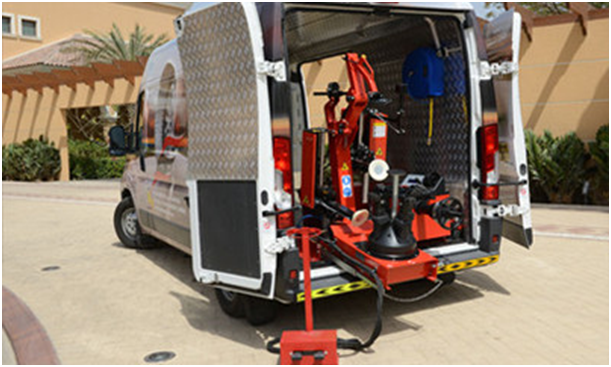
One more thing concerning the sidewall is that you should avoid driving any further on a flat tire if you hope to salvage it. Inflation pressure maintains the shape of the tire while driving; when that pressure is lost, the tire sidewall is going to be pinched between the wheel rim and the road, so continuing to drive will extend the damage beyond the minor repair area.
In other words, do not drive on a deflated tire while the puncture is within the minor repair area (and is therefore repairable). The tire sidewall could sustain additional damage that renders it beyond repair. The better course of action is to have the vehicle towed or swap the punctured tire out for the spare tire until you reach the nearest garage.
Dealer Locator
Workshop Solutions
Wash area Reception/delivery area Diagnostic area Locksmith area Wheel alignment area Tire shop Body repair shop Painting area
Tire shop
Purpose of the tire shop
The equipment of the tire shop allows mounting and dismantling of all types of wheels of cars, SUVs and light trucks with rims from 10" to 30" in diameter, as well as repairing all types of damage on chamber and tubeless tires, including damage to the tread, shoulder and sidewall, when the extent of damage, not exceeding the maximum allowable.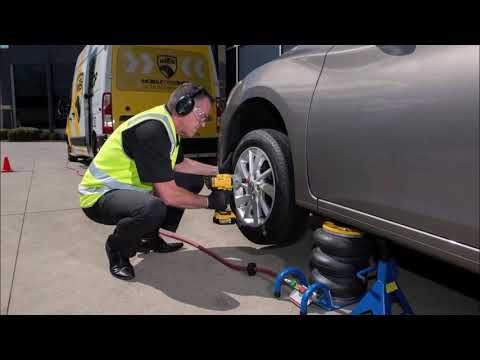 Balancing stands, which are also part of the site, allow you to eliminate wheel imbalance. nine0011
Balancing stands, which are also part of the site, allow you to eliminate wheel imbalance. nine0011
Equipment
To organize a full-fledged tire fitting and wheel balancing area, the following types of technological equipment will be required:
In addition, to repair punctures and cuts in tires, you will need:
You can purchase all the necessary equipment for organizing a turnkey tire changer from our company.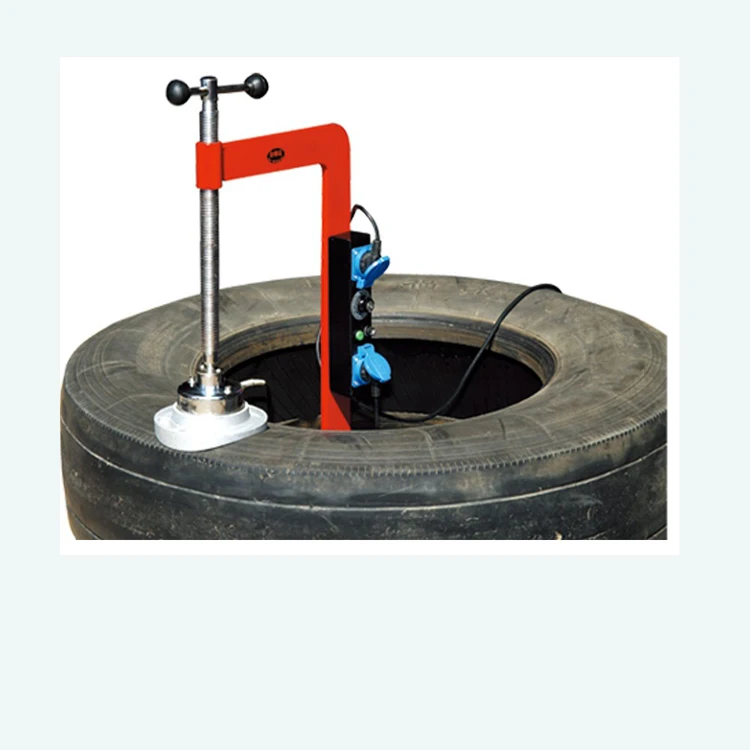
Technological process of section
The sequence of operations at the tire shop is as follows:
the car drives onto a tire changer with a low lift height or is hung out using rolling jacks.
Next, using a pneumatic wrench, the wheels are removed from the car and placed in a special wheel wash. nine0011 Then the wheels are disassembled on a tire changer, if necessary, punctures / cuts of tires are repaired by vulcanization, or new tires are installed (seasonal tire change).
Then the newly assembled wheels must be balanced on a balancing stand.
If the tire shop is equipped with a Hunter GSP9700 or Road Force Touch (RFT) vibration control stand with a load roller, then with their help it is possible to carry out not only ordinary balancing, but also in-depth wheel diagnostics aimed at determining and subsequent minimization of the power inhomogeneity of the wheel, as well as eliminating side slip of a set of wheels, as a result of which the owner returns the "move of a new car". nine0011 After the wheels are assembled and balanced, they are installed back on the car and tightened with a certain force using a torque wrench.
nine0011 After the wheels are assembled and balanced, they are installed back on the car and tightened with a certain force using a torque wrench.
This is important so that the wheel bolts or nuts do not unwind during further operation, and at the same time not to overtighten the fasteners, which leads to deformation of the fastening thread and the impossibility of unscrewing the wheel in the future with a regular wheel wrench, especially in road conditions with a puncture .
Equinet turnkey project
Equinet offers ready-made solutions for designing a tire fitting site, as well as select all the necessary equipment and tools in accordance with your needs, wishes and budget.
We provide warranty support for all supplied equipment within the framework of manufacturers' warranties. Moreover, Equinet offers an extended warranty for up to 5 years, subject to the conclusion of a subscription service agreement. To implement warranty obligations, our company maintains a warehouse of spare parts for the equipment supplied.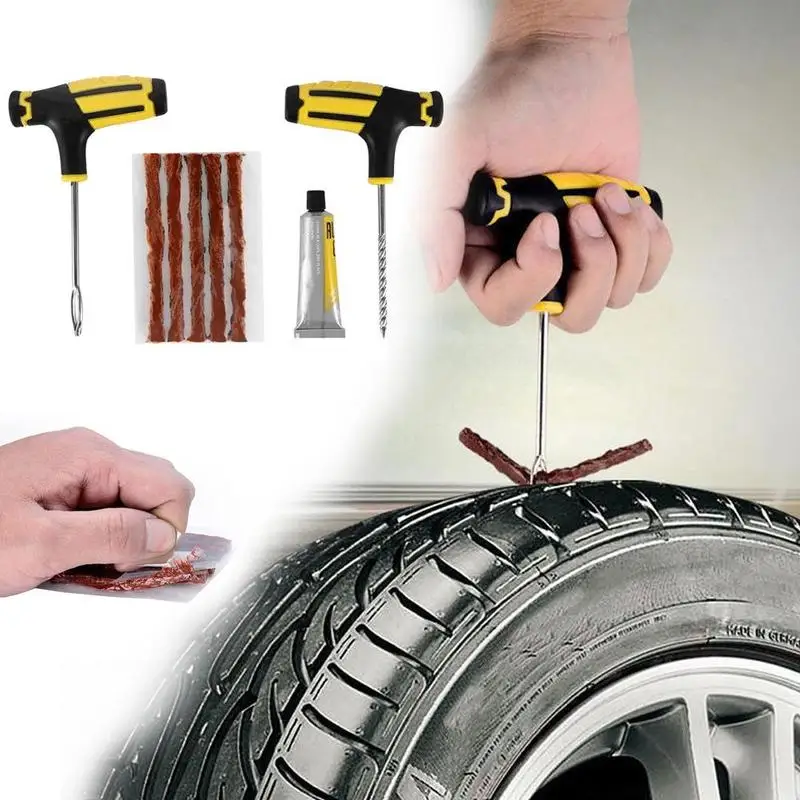 nine0003
nine0003
Tire Repair the site at STOA-1 is intended for dismantling and installation tazha wheels and tires, replacement of tires, TR chambers and wheel rims, as well as balance assembled wheels. At the same time, washing and drying the wheels before dismantling at non- necessity perform here or in the MMR zone, where there is a hose washer installation.
Technological tire shop process perform in order ke submitted in figure 13.1. nine0003
wheels, removed from the car at the post are transported to a tire shop plot with the help special cart. Before the start of repairs wheel works temporarily stored in rack. Tire removal is carried out on special demon- installation and installation stand in the sequence provided technological map. After dismantling the tire and wheel rim store on the rack, and measure on a hanger.
Technical the condition of the tires is controlled by careful OS- mothra from the outside and inside using manual pneumatic- th side expander (spreader). foreign objects stuck in the tread and sidewalls tires, remove with pliers and stupid sewing. Outsiders
metal items in the tire can be detected in the process of diagnosing erasing with using a special device. At verification of technical standing cameras detect punctures, breakdowns, breaks, dents and other defects. tightness chambers are checked in a bath filled with water and equipped system compressed air supply.
Control examination of the disks is performed to identify cracks, deformation corrosion and other defects. Mandatory check status holes for wheel studs. Rims from rust is cleaned on a special social machine with electric drive. Minor Defects rims such as bend- toast, burrs are eliminated on a special stand and with the use of locksmith tool. nine0003
Studding produced on a special stand, in if the tire does not have formed holes for the spikes they are drilled on pneumatic drilling casting machine, which provides the necessary high speed drill.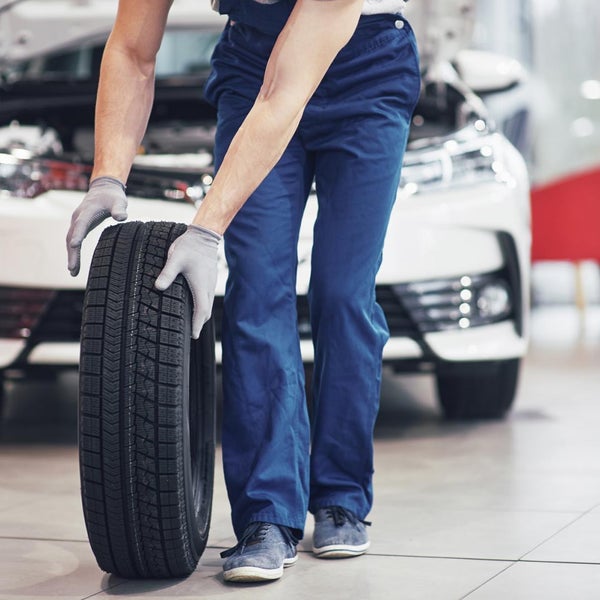
Technical good tires, tubes and rims mount, and daemon- tiring on one and the same stand. Tire pressure must match to comply with the norms recommended by the manufacturer. Tire changer stock equip standard manometer, according to which periodic check workers pressure gauges. After mounting the tires, be sure to carry out balancing ku wheels in collection at a special stand
Tire department provide the necessary technical document mentality, including including technological maps on fulfillment of the main dov works, and relevant technological equipment.
Plan and equipment of the tire shop Autocolumns 1825 presented in the application D.
Conclusion
Walkthrough undergraduate practice is important element of educational process for specialist training as well as the first stage of development of di- full project. nine0003
In the time of its passage future specialist applies received in process teaching knowledge, skills and practice.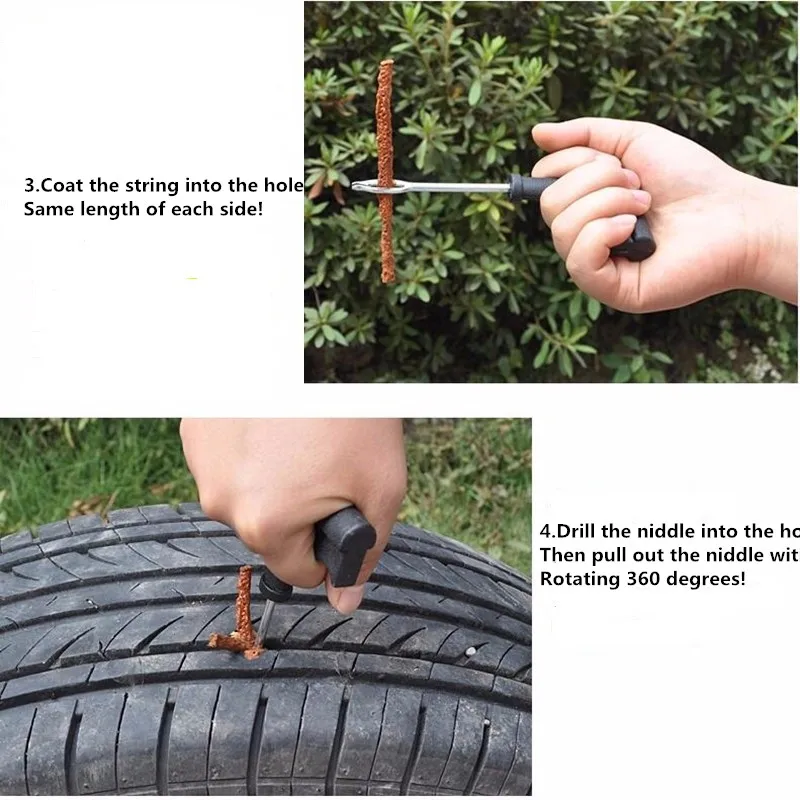
Main tasks of undergraduate practice are:
receiving practical work experience.
improvement the quality of professional training.
consolidation acquired knowledge in general and special disciplines.
examination students' ability to use the received knowledge. nine0003
collection and analysis of the main production enterprise indicators
I AM mastered some of the subtleties of his knowledge in practice, understood how the work- no enterprise in the complex.
Practical activities helped me to learn decide on your own definite range of tasks that arise in the course of work. In particular, I have studied work package enterprises and their main production indicators .
By course of undergraduate practice I reviewed the work tire fitting section of the Motorcade 1825 and certainly use semi- knowledge for the development of a tire shop OOO "Orentrans- KAMAZ ORDER-ORDER
Contract No.
Full name customer, address and telephone:
Make, model
State. No.
nine0009 Engine No.
Body No.
Date sales
Mileage
Advance payment
Date order acceptance
Time arrival Hour min.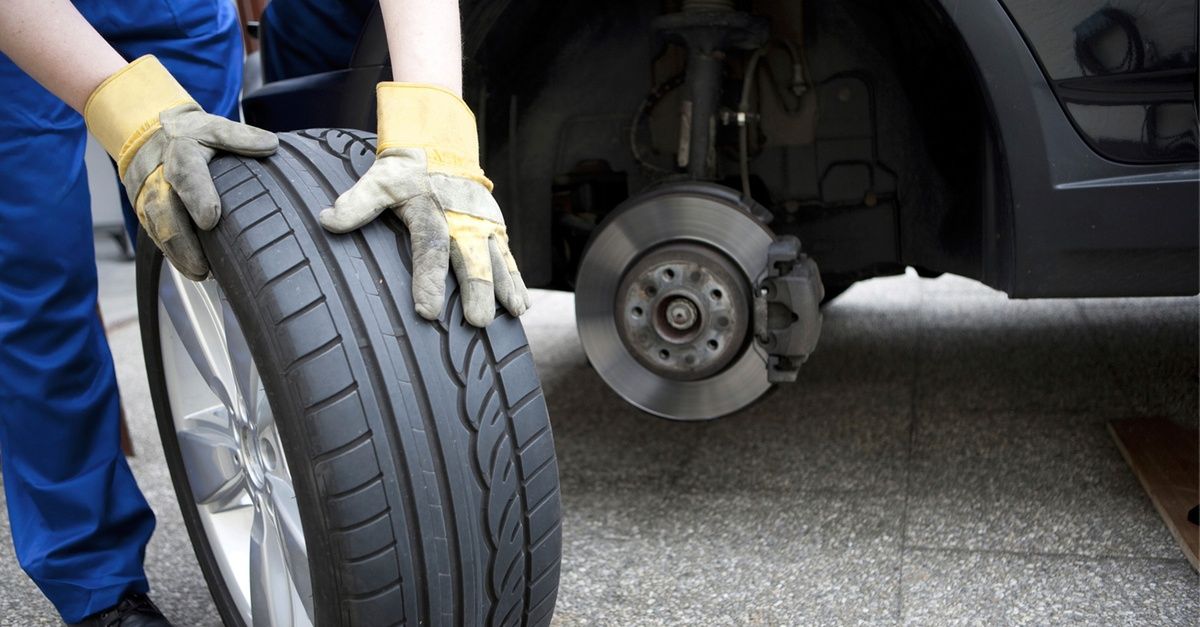
Term order execution Start end
Code or Operaii n
View or symptom of a problem ., Description of work at Gar. repair indicate manufacturer def. details
Number
Fact, time
Cost services
n/a
(hour)
Tab.
No.
Control OTK or Masters
C service rules enterprises JSC "KAMAZ" car maintenance and repair mobiles familiarized Customer: (signature)
Master
TOTAL:
Chief workshops
Sheet
Sheets
Production and technical building
1.